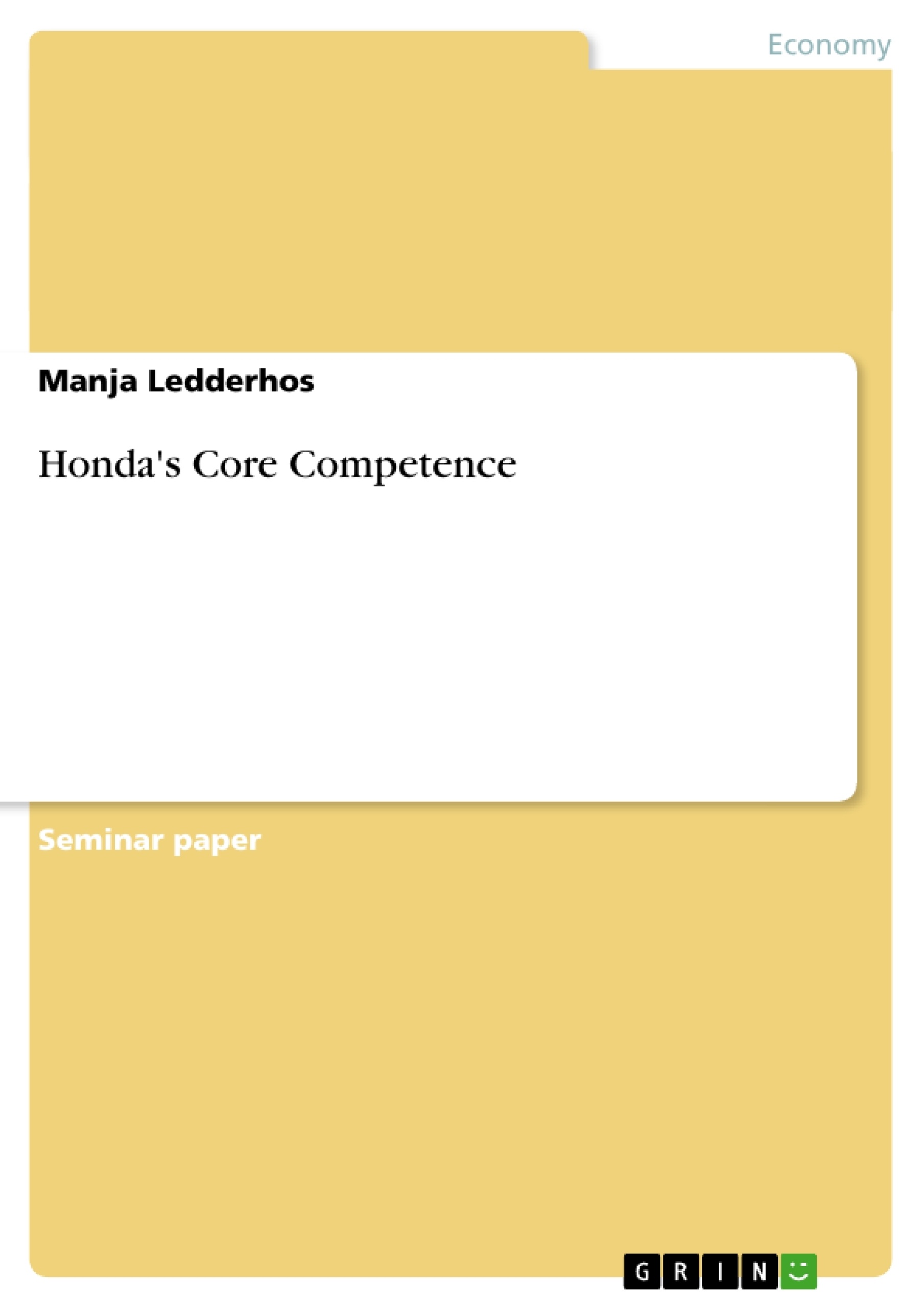The company Honda started very small and gradually developed into the size of a multinational cooperation. Today it has developed a big network of subsidiaries worldwide.1 Through relying on core competence they were able to develop into the company we see today. In the long run, a company’s core competence comes from its ability to build at lower cost and more speedily than competitors competitive advantages.2 Usually, it takes innovative acts to build this and the goal of a company should therefore be competitive innovation instead of competitive imitation.3 Honda has a two to three years cycle from development to production compared to a four years average in the auto-industry. Also, products such as the Super Cup created great enthusiasm in America because it was offered at a very small price. Next, Honda often develops its own equipment and finds solution to specific problems. To be the largest motorcycle producer in 1959 is only one evidence for striking success. It’s major influence in revolutionizing products worldwide seems mysterious considering the general background of the poor entrepreneur Soichiro Honda in the 40th and the small size of Research and Development expenditures today in front of fierce competition from other larger firms.
Inhaltsverzeichnis (Table of Contents)
- Introduction
- Background Information
- Aim of the Paper
- Analysis of Honda's Success Story
- Organizational structure
- Corporate Culture
- Leadership
- Lead In
- Strategic Vision
- Strategic Implementation
- Future at Honda
- Lead in
- Future problems
- Future Recommendations
- Conclusion
Zielsetzung und Themenschwerpunkte (Objectives and Key Themes)
This paper aims to analyze the secret of Honda's success in building core competencies through innovation. It examines organizational structure, corporate culture, and leadership as evidence for Honda's successful surroundings.
- The importance of core competence in achieving competitive advantage.
- The role of organizational structure in fostering innovation and resource allocation.
- The influence of corporate culture on employee commitment and ownership.
- The impact of leadership on strategic vision and implementation.
- The significance of continuous innovation and learning in driving long-term success.
Zusammenfassung der Kapitel (Chapter Summaries)
The introduction provides background information on Honda's development from a small company to a multinational corporation. It highlights the importance of core competence in building competitive advantages and emphasizes Honda's focus on innovation. The chapter on the analysis of Honda's success story explores the company's organizational structure, emphasizing its flat hierarchy and the role of teamwork in fostering innovation. It also discusses the importance of resource allocation and knowledge sharing within the organization. The second chapter delves into Honda's corporate culture, highlighting its commitment to employee respect, ownership, and commitment. It emphasizes the sense of equality and shared decision-making, which contribute to employee motivation and problem-solving approaches.
Schlüsselwörter (Keywords)
Core competence, innovation, organizational structure, corporate culture, leadership, competitive advantage, resource allocation, knowledge sharing, employee commitment, ownership, strategic vision, implementation.
- Quote paper
- Manja Ledderhos (Author), 2002, Honda's Core Competence, Munich, GRIN Verlag, https://www.grin.com/document/11058



